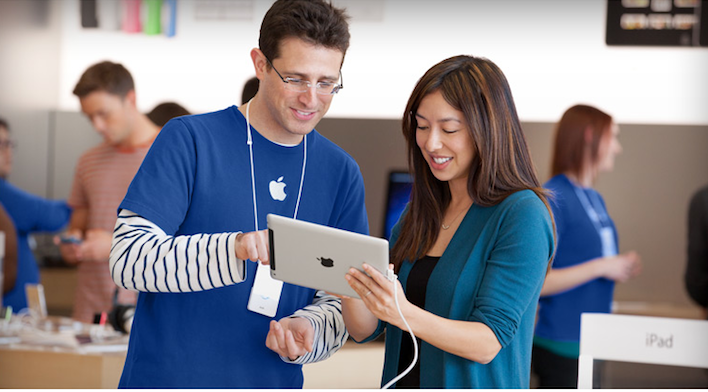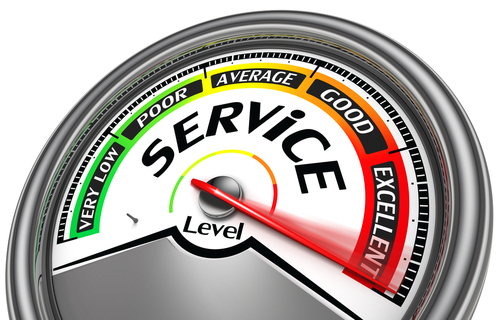In an age which some may term as the “experience economy”, companies and businesses can ill afford to focus solely on quality products or low prices. The entire spectrum of engaging and enrapturing a customer through every single touch point – both online and offline – becomes critical.
It isn’t just the transaction itself that matters. Rather the entire customer experience journey becomes important. This includes reading/hearing about your product online or offline, browsing your stores/ websites, speaking to a retail associate, purchasing the product, experiencing the product, and after sales customer service.
With the ubiquity of social media networks like Facebook, Twitter, Instagram, and blogs, customers are sharing positive or negative experiences with a far greater network than ever before. Ignore these voices at your own peril!
Designing Great Customer Experiences
Against such a backdrop, what can companies do to improve their customer experiences?
In this article by experience designer Dane Petersen, a customer’s engagement with your products, services or environments are affected by these human qualities:
- Motivations: why they are engaged with your offering, and what they hope to get out of it
- Expectations: the preconceptions they bring to how something works
- Perceptions: the ways in which your offering affects their senses (see, hear, touch, smell, taste)
- Abilities: how they are able to cognitively and physically interact with your offering
- Flow: how they engage with your offering over time
- Culture: the framework of codes (manners, language, rituals), behavioral norms, and systems of belief within which the person operates
Understanding these qualities in your customer would provide a useful first step in designing physical and online environments, service offerings and interactions. It should also inform how staff are trained to engage with customers, be it on Facebook and Twitter, or face-to-face at the outlet itself.
A good way to do so would be via conducting interviews or focus groups with targeted customers, as well as observing their behaviours at both online and offline. Through eye tracking technology, both physical and virtual behaviours can be monitored and used to refine the design of shops and websites.
Mapping Your Customer Experience Journey
Beyond design, you should also examine your customer’s complete journey. This was highlighted by a HBR article by Adam Richardson which covered three key facets to take note of:
- Customer Journey: A thorough understanding of the journey that your customers take with your company. In a car rental company Zipcar’s case, it starts with informing customers of the service and then signing them up, with multiple stages flowing out from there.
- Touch Points: All the various points of interaction — products, web sites, social platforms, advertising, call centres, and others — that support the customer through their journey.
- Ecosystems: This relates to the integrated ecosystems of products, software and services that may open up new possibilities for customer journeys and experiences in ways that more isolated touch points cannot.
In the digital and social media environment, engagement and interactions can be further improved through the collection of real-time engagement data along every step of the way.
Organizing to Deliver Great Customer Experiences
OK, so we’ve looked at the human factors from our customer’s perspective, developed a map of their interaction points, and considered how we can design them accordingly. What’s the next step?
The answer? Get your entire organisation and all members of your team on board!
Here, the 6 Laws of Customer Experience by the Temkin Group may be worthwhile to consider:
- Every interaction creates a personal reaction – Experience needs to be designed for individuals and optimised, putting in place the right measurements and employee empowerment mechanisms.
- People are instinctively self-centered – Don’t assume that your customers know as much as you do, seek to help customer buy things (not sell to them), and don’t let organisational factors influence service.
- Customer familiarity breeds alignment – Broadly share customer insights across the organisation, talk about customer needs rather than personal preferences, and don’t wait for organisational alignment.
- Unengaged employees don’t create engaged customers – Training and development of staff is key, deploy technology to help your team members do their job better, communicate profusely, celebrate achievements and measure engagement.
- Employees do what is measured, incentivised, and celebrated – Leave nothing to the imagination, define clearly what is expected, and look out for mixed messages. Ensure that measurements, incentives and celebrations are aligned.
- You can’t fake it – Anything below a 3rd priority is not good enough, don’t start if you’re not committed to a major customer service initiative, and advertise to reinforce rather than create a customer oriented positioning.
Engineering memorable and delightful customer experiences can be sheer hard work, since many of us are not intuitively wired to do so. Achieving it requires a keen understanding of your customers, how they interact with your products/services, and how you deliver it through your staff, website, social media platforms, physical stores, and any other touch point.
However, delivering consistently excellent customer experiences not only gives your company a huge competitive advantage – it also generates positive buzz and word of mouth. This is something which money can never buy.

Apple’s success lies in providing premium customer experiences every step of the way (courtesy of Zopim Blog)


The site seems to be interesting..!!Thank you so much for sharing this..!!
wayanad resorts
thanks for sharing such informative article .keep writing …..
The Customer Experience
is a fundamental element of the business strategy of the company. Once your different customer relationship supports have been identified, you will have the
opportunity to make improvements
EXO Help Desk Support System is designed for team collaboration to resolve issues efficiently and to improve productivity of agents. It’s not only for sending replies but also for control access, visual analytics, real-time monitoring and updates, status tracking, service level management, etc. in EXO Help Desk software, ticket filtration is based on specific properties. So, the agent can handle the most prioritized ticket from front and center. Help Desk software